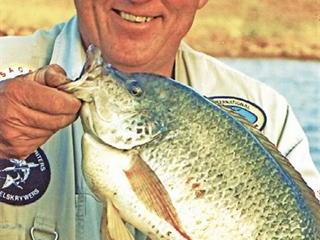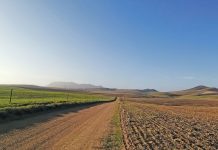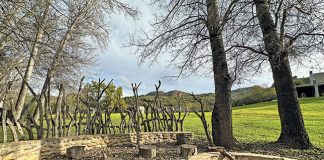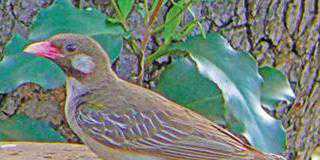
On a cool but cloudless early autumn day in March 2003, I was on a boat with the legendary kurper boat angler Frits Beumer, way up in one of the inlets of Mpumalanga’s famous recreational fishing water, Loskop Dam. We had started our day at about 3.30am. Having done so for many years, we knew the value of a structured, early morning launch procedure. It’s not good for one’s state of mind to be hurried that early, and after all, a day out on the water is supposed to be relaxing, not taxing!
Not that we had no plan of action. Indeed we did. Our objective, apart from enjoying a good day’s fishing, was nothing less than to establish a new world record for blue kurper, arguably the most well-known member of the Oreochromis genus. Having bade farewell to the competitive boat angling scene, we had been trying to land the world record for the past three years, but Loskop had steadfastly refused to deliver a fish exceeding 3kg.
Like most species and dams, Loskop and its blue kurper population has its cycles – a few years in which the dam produces abundant food that in turn produces faster growth rates and increased average weight of the adult fish. The increased fecundity also results in far too many fish being produced for the food supply, and as the fish compete for this, nature’s rules kick in and the breeding intensity cools. Fewer fish mean more food per individual and so the average size increases. After a few years of this phenomenon, the food-to-numbers ratio restores itself and the cycle starts once again.
The value of experience
Frits and I had been fishing Loskop for many years, but he was by far the more experienced. Having seen this cycle several times, he knew how to adapt to the changing conditions. To target the really big specimens (the intention of most anglers) demands a whole bucket of observation, patience and perseverance, and of course the ability to combine all these elements into a cohesive game plan.
Over the years, this approach had produced good kurper fishing for him, and several wins in the blue kurper cash bonanza tournaments that helped establish Loskop as the country’s premier kurper venue. In the process, Frits became known in angling circles as the ‘Loskop Legend’.
During the previous three years we had experienced an increase in the average weight – but without passing that magical 3kg mark. But, as always, we knew what needed to be done. Within an hour of launching the boat, our baits were in the water at a spot known by Loskop boat anglers as ‘Frits’s Bay’.
Kurper rigs are not too complicated – a bunch of earthworms loaded onto a #1 long shank hook and an adjustable slip float threaded onto the line. We had plumbed the water’s depth and used a slip knot on the line to rest the hook just on the bottom. With this method, when a fish takes the bait, the movement of the hook moves the float, warning that a kurper is at work down below. If the fish picks it up, the float rises and lies flat on the surface.
If the fish ingests the bait and moves off with it, the float is dragged under. In both instances, the angler must decide on the right time to strike and set the hook. This cannot be learned from books, only through trial and error, of which we had plenty…
Kurper by the boatload
At about 9am, after we had enjoyed a packed breakfast, the fun began. Frits landed the first fish (he always did!), a prime specimen weighing just on 2,6kg. We looked at each other and both of us knew – today could just be ‘The Day’! Frits hung a keep net over the side, and into it went the fish that we would keep for the table – one in every 10, the rest being released.
Arguably, the best size fish to keep for the braai is one of about 1kg, but that day all the fish were way over 1,5kg.
We were experiencing a red-letter day – one of those that anglers the world over dream about – and stopped counting when I boated fish number 45. By noon we had had enough, but true to form, had to have “one more last cast”. My float had hardly hit the surface when the line pulled tight and put a serious bend in the rod, and a few minutes later Frits did the honours, netting a kurper that had us momentarily tongue-tied.
“Get the scale, quickly!” he said, sounding quite hoarse with excitement. We let the scale settle: it indicated more than 3kg, and when we weighed the kurper on shore, it was confirmed as 3,11kg. The world record was ours! Since then, we have targeted big kurper every year at Loskop during the autumn months, but overfishing has decimated the number of true trophy-sized specimens.
This year’s trip never came off, as every planned outing was postponed for one reason or another. Now it will never happen, for Frits passed away in March, just one month before his 70th birthday. Regrettably, Loskop’s blue kurpers are now under dire threat from pansteatitis (yellow fat disease), a physiological condition believed to be caused by pollution, in which the body fat becomes inflamed and solidifies to such an extent that it curtails the fish’s mobility so severely that it cannot move or feed and eventually dies.
Eugene Kruger is a freelance angling journalist and leisure fishing consultant. He is editor of two angling magazines and South Africa’s representative on the International Game Fish Association.
Contact Field Sports writers on 083 235 4775 or [email protected].













